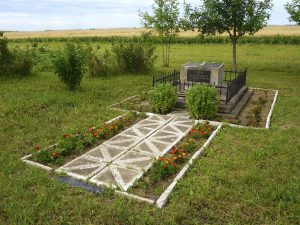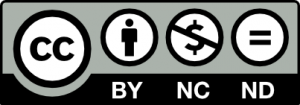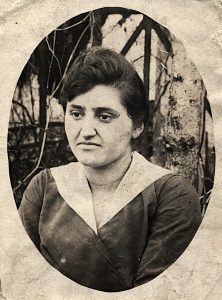(This is a chapter from Jack Glotzer’s memoir, I Survived the German Holocaust Against All Odds. Click here to return to the Table of Contents.)
On March 19, 1942, my cousin Chaim Blaustein, who was a butcher, asked me to come to his house early the next day. He had acquired some meat which he wanted me to distribute to his good paying customers. As a reward for my efforts, he would also give me some meat. On the 20th of March 1942, I went to my cousin at 6:00 a.m. His house was located across the street where butcher stores used to be. He gave me the packages of meat and told me where to deliver them. By that time, it was 7:00 a.m. As I came out of the house, I glanced to my left, which was facing the Ukrainian church (cerkwia).[40] All of a sudden, I noticed approximately five Gestapo[41] men (normally Gestapo men did not come into the ghetto; they were stationed in Stanisławów); they were taking rifles from their shoulders and started to shoot people around them. It was still early in the morning so there were not too many people on the streets. I ran back into the Blaustein’s house. In their building there was a passage which led to another street. I thought that from this street I would be able to make it to my house and inform my family what was going on. But when I came to the other end of the passage, I saw Gestapo men also in this vicinity shooting people as well. I realized that I could not run any further because I would get shot. I ran into the closest house. The people in this house were still asleep; I knocked hard on their door. The name of the people who lived in that house was Cytryn. Finally, they opened the door; when I told them what was happening, they did not believe me, they ignored me. They did not believe that something like this could happen. But when they looked out of the window, they realized that what I told them was true.
By that time the Gestapo men were approaching their house. We locked the door. The Gestapo men started to scream “Verfluchte Juden, Raus!” (Damned Jews, Out!). They ripped the door open and barged into the house. They started to take five or six people out of the house, lining them against the fence and shooting them. There were approximately 30 people in that house; there were small children, old people, and pregnant women. I still hear their screams when I cannot sleep at night. Somehow, I managed to be the last in the line to be dragged out. Finally, I noticed that I was next in line. When I saw that they were coming closer to me, I noticed a closet (wardrobe) nearby. I crawled and jumped into this closet. (When I think now about it, I felt like something pulled me into this closet.) I hung on with all my strength in that closet. When it quieted down and the screams stopped, I knew that everybody was shot. Two Gestapo men came into the room where I was in the closet. One Gestapo man said to the other: “There was a young fellow here” (ein junger Bursch). But the other Gestapo man replied: “I finished him off.” Then they left.
After approximately two hours, I came out of the closet. A woman with a baby in a bed (she recently gave birth to the baby) was sitting up in the bed. Her eyes were open. I walked over to talk to her. When she did not answer, I touched her, and she fell; her blood was streaming out. They shot her and the baby in bed. Her husband was an assistant chief of the Jewish police; he was not home at that time. Their name was Halpern (no relation to Rosette). All of a sudden, the woman’s brother came out from under the covers of a nearby bed. He became hysterical; I quieted him down. I asked him whether there was a cellar in the house. He told me that there was no cellar in the house but there was an attic. The access to the attic was from outside; there was a ladder outside. We waited to be sure that it was quiet outside. He said that he would go first, and I should follow him. As I was about to follow him, I heard a shot. I saw him fall down from the ladder.
I backed up into the house. I tore up the pillows and the down quilts. I made a mess all over and crawled under the bed. Two Gestapo men came back to the house. But when they saw the feathers all around, they did not walk into the room (being such “clean” people). They did not want Jewish feathers on their uniforms. But they did not mind Jewish blood on their uniforms which splattered on them during their murders. I stayed under the bed for another few hours. When it became quiet, I crawled out from under the bed. I looked out of the window; I did not see a living person. But what I saw, I will never forget as long as I will live. There were dead people scattered in the front yards of every house; there were little children, women, and old people. The blood was all over the yards.
When I came out of the house, I could still hear shots from the distance. My house was quite far from where I was. I was afraid to run toward my house because I was all alone. I went back in the direction of the Blaustein’s house; but then I realized that I was all alone, and I did not see anyone alive. I was then near the house where my school friend lived. His family[42] lived in the basement of this house. There was no father there. I did not know whether the father died or left his family. They were very poor. I walked into the basement apartment. The family was hiding under the down quilt. At first, they did not move but when they heard me calling their names, they came out from under the quilt.
When they saw me, they cried from joy. I told them that I still heard shots and that we had to stay hidden. I was very relieved that at least I was not alone. Their apartment consisted of one room; the bed took almost the whole space in the room. There was hardly any room for me. I saw a closet (my favorite hiding place). Since they were so poor, there was not too much stuff in that closet. I went into that closet. I was tired and scared but I dozed off. I stayed in that closet until dawn. Then we heard voices outside.
Jewish policemen knocked at each door. They told everybody that the Aktion[43] was over and that the Gestapo had left the ghetto. I was very anxious to go home. I did not know whether my family was alive. On the way to my house, I saw dead people all around. First, I looked at their faces and I recognized the people I knew. As I was coming closer to my house, I stopped looking at the dead faces for fear that I might see somebody from my family. As I came closer to my house, my mother and my brothers ran out of the house with joy and tears in their eyes; they were sure that I had been killed.
When the Germans came to our town, my mother had an idea to move a big closet to an opening leading to a big attic. She indicated that since we did not have a male adult, we could hide in the attic. She told us that during the pogroms when the Kozaks (the Russian bandits)[44] had come to rape the women, this had been their hiding place. So, this was the place where my mother, my brothers and all our relatives (who lived in this house) were hiding on March 20, 1942. I was sorry that in the morning of March 20, 1942, I had left my house. But in retrospect, this day gave me experience for what was in store for me in the coming months. I learned a lesson of survival – which was to take chances in order to survive. I also learned to look at blood and dead people without being afraid.

The mass grave site south of Rohatyn, where Jack worked to bury the dead following a long day of killings in spring 1942, as seen in 2022.
The plaque reads:
Here lie 3500 Jews, citizens of Rohatyn and its surrounding areas, who were brutally killed by the German Nazis on the 20th of March 1942 – God rest their souls
On March 21, 1942, the Judenrat received an order to recruit about ten young people (I was among them) to go to the outskirts of the town (the area where the Germans had previously brought in equipment and dug ditches, as I mentioned before). Some older people came along to observe and to help out. This place was about 4 km (two and a half miles) from our town.[45] The Germans gave us shovels and told us that we were going to bury the people who were taken to this place alive and were shot there on March 20, 1942. On the way to this place (where the ditches were) we had to gather the dead people who were shot in the ghetto (on March 20, 1942) and put them on sleds driven by horses. It was a very cold day. We saw frozen bodies scattered all around. Some old people could not walk, so they shot them. We had to gather them on sleds and bring them to the ditches. When we finally came to the area where the ditches were, we could not believe our eyes at what we saw. First, we started to vomit, and we blacked out. There were about 3,000 people dead, frozen one to another. In order to bury them, we had to separate them. Children were holding on to their mothers; their fingers were frozen, and we were unable to separate them. We had to throw them into the ditches (there were two ditches). We kept burying them. The soil was frozen. Hands, arms, and legs were protruding from under the soil. It was impossible to cover them completely. Most of them had open eyes. I recognized some of them. Fortunately, there was nobody from my immediate family. We had to take breaks. It was impossible to do it continuously. It was very cold, but I did not feel it. We were numb. We worked for a few hours. After this experience I was never the same. A Jewish policeman came with us. He told us that it was enough for one day. For the next two weeks we had to go back there. As the soil started to thaw, the bodies started to rise to the top of the ditches. We had to cover them over and over. As the time progressed, we became completely numb; we did not have any feelings.
The ghetto became almost empty after March 20, 1942. Over 3,000 Jews were murdered. Some 100-110 families survived. Everybody was walking around like zombies. It seemed as if everybody was in mourning. The Germans started to bring into the ghetto Jewish people from surrounding towns and villages (Bursztyn, Bołszowce, Bukaczowce and others). Everybody lived in fear. The survivors were trying to build hiding places.
Now we realized what the Germans were capable of doing (incidentally the head of Gestapo in Stanisławów, responsible for the massacre of Jewish people in the Rohatyn ghetto, was a murderer by the name of Krüger). Everyday there were rumors that the Gestapo would return. At night we took turns to be on the lookout. In order for others to sleep, one person was always on guard. Luckily, in our house we were all alive after the 20th of March 1942 Aktion.
After the March 20, 1942 Aktion, life was not the same. We lived in constant fear. Everybody was trying to build hiding places. When a truck passed by the ghetto, we ran into hiding places. Even the children, when playing, were trained to stay close to the hiding places.
I was assigned by the Judenrat to do some electrical work in the police station (this building belonged once to a lawyer by the name of Zlatkes).[46] Each time, when I did not do a good job (I was not a professional electrician), the Germans beat and kicked me. But in spite of this, I was glad to be there. The workers in the kitchen in this building, where I used to go to, took pity on me; they gave me some bread and other food which I took home for my family.
[40] This is the Ukrainian Greek Catholic Church of the Nativity of the Holy Mother of God, near the northwest corner of Roksolana Square. – Ed. [41] Jewish and other survivors of the German occupation of Rohatyn usually refer to the Nazi paramilitary death squads (Einsatzgruppen) which led the aktions as “Gestapo”. However, overlapping responsibilities and a shortage of staff within the German security services in Distrikt Galizien, especially in the Stanisławów area, meant that mixed groups of armed men from the Gestapo, SD, Orpo, Kripo, Waffen-SS, and/or local auxiliary police probably took part in the Rohatyn aktions. – Ed. [42] A mother and three children. [43] Expulsion or annihilation of Jews in ghettos or other concentration points by Germans. (“Aktion” is a German-language word retained in other languages for this specific usage. The Polish-language equivalent is “akcja.” The counting of aktions in Rohatyn varies among Jewish survivors and researchers, depending on the severity of the aggression and the number of people injured, deported, or killed. – Ed.) [44] This probably refers to the local experience of World War I. In 1914-1915, when the battlefront passed through the territories of Eastern Galicia during a confrontation between Austria-Hungary and Russia, Russian tsarist troops invaded and occupied Galicia, including Rohatyn. The Russian occupation was accompanied by brutal anti-Jewish pogroms and deportations. – Ed. [45] The killing and burial place which Jack describes is located adjacent to the road between the Babyntsi neighborhood of Rohatyn and the village of Putiatyntsi. Jack remembered it farther, but the grave site is actually about 1.5km southeast of Roksolana Square at the center of Rohatyn, or about 2km by roads. – Ed. [46] The German police station described here and in later passages is identified on a 1943 street map of Rohatyn and on memory maps of the central town square made after the war by Jewish survivors (as the law office of Dr. Zlatkes). Today the address of the building is vul. Halytska 64 at the northeast corner of Roksolana Square. – Ed.
 Published by the Ukrainian Center for Holocaust Studies, (UCHS), Kyiv. This work is licensed under the Creative Commons Attribution-NonCommercial-NoDerivatives 4.0 International License. To view a copy of this license, visit http://creativecommons.org/licenses/by-nc-nd/4.0/ or send a letter to Creative Commons, PO Box 1866, Mountain View, CA 94042, USA.
Published by the Ukrainian Center for Holocaust Studies, (UCHS), Kyiv. This work is licensed under the Creative Commons Attribution-NonCommercial-NoDerivatives 4.0 International License. To view a copy of this license, visit http://creativecommons.org/licenses/by-nc-nd/4.0/ or send a letter to Creative Commons, PO Box 1866, Mountain View, CA 94042, USA.
<- Back to the previous section

